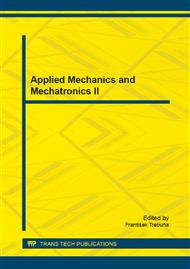p.49
p.54
p.63
p.69
p.76
p.88
p.96
p.103
p.108
Simulation of Temperature Fields in the Transport Container
Abstract:
This article discusses the distribution of temperature in a transport container for spent nuclear fuel due to the generation of residual heat. ANSYS CFX simulation software was used to determine the temperature fields. The container is constructed of thick-walled carbon steel. Fins were provided on the outer casing of the container for better heat dissipation. Numerical simulations of temperature fields will be performed on the transport container with C-30 type designation. A container with a flow of water and nitrogen within the casket was considered during the performance of numerical simulation. The results of numerical simulations define the distribution of temperature fields, subject to adhering to storage conditions which prevent surface temperatures exceeding permissible values.
Info:
Periodical:
Pages:
76-87
Citation:
Online since:
November 2015
Price:
Сopyright:
© 2015 Trans Tech Publications Ltd. All Rights Reserved
Share:
Citation:


